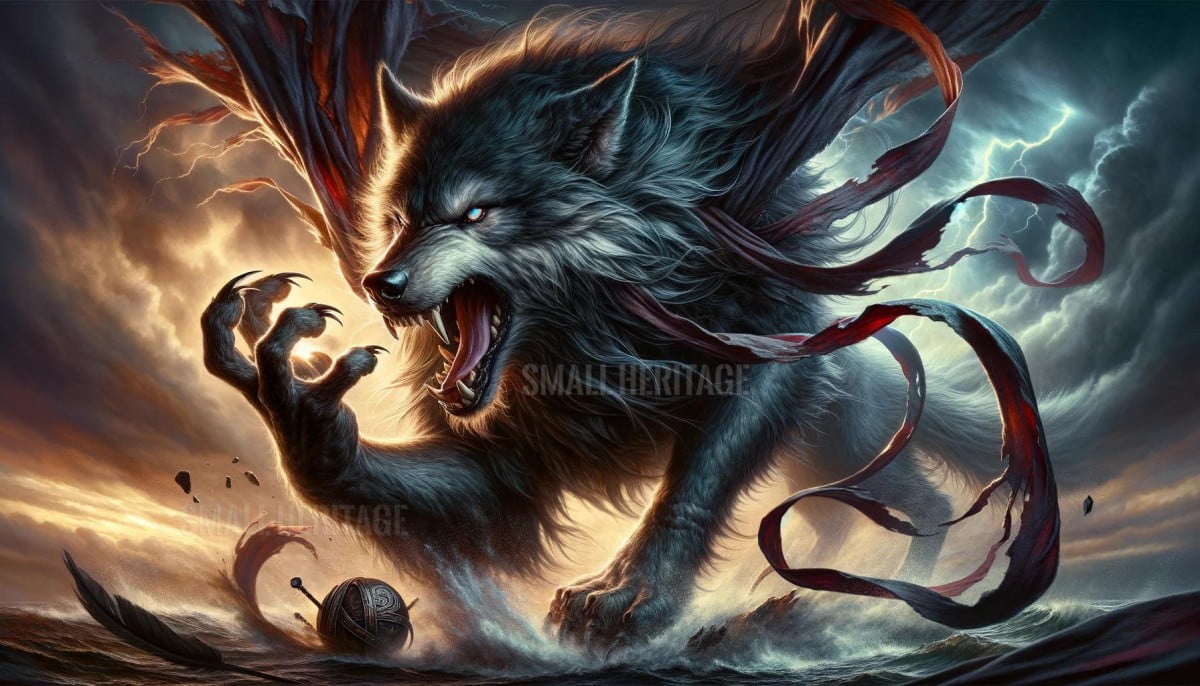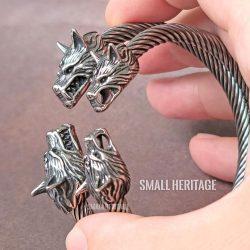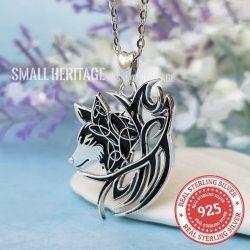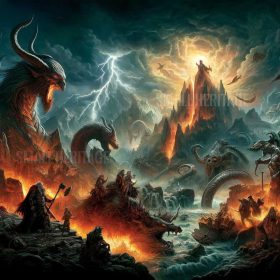Fenrir, the legendary wolf from Norse mythology, stands out as one of the most powerful and fearsome creatures in Viking lore. Born to Loki, the mischievous god, and the giantess Angrboda, Fenrir’s story is a blend of prophecy, fear, and awe. In this post, we’ll explore the origins, significance, and legacy of this mighty wolf.
Origins and Family
Fenrir is not just any wolf; he’s a part of an extraordinary lineage. His siblings are Jormungandr, the world-serpent, and Hel, the ruler of the underworld. From the moment Fenrir was born, it was clear he was no ordinary wolf. His rapid growth and immense strength quickly alarmed the gods of Asgard.
Prophecies and Imprisonment
The gods soon learned of a prophecy that foretold Fenrir’s role in Ragnarok, the end of the world. According to these predictions, Fenrir was destined to wreak havoc and ultimately devour Odin, the Allfather. To prevent this catastrophe, the gods decided to bind him.
They first tried using regular chains, but Fenrir broke free with ease. Realizing they needed something stronger, the gods enlisted the dwarves to craft a magical ribbon called Gleipnir. Made from six impossible ingredients – the sound of a cat’s footsteps, the beard of a woman, the roots of a mountain, the breath of a fish, the spittle of a bird, and the sinews of a bear – Gleipnir was incredibly strong yet appeared delicate.
The gods, using cunning rather than force, tricked Fenrir into testing this ribbon. When Fenrir realized he was trapped, he bit off the hand of Tyr, the god who had tricked him. Bound by Gleipnir, Fenrir was imprisoned on an isolated island, waiting for the day of Ragnarok.
Fenrir and Ragnarok
Ragnarok, the apocalyptic end of the world in Norse mythology, is where Fenrir’s story reaches its climax. During this cataclysmic event, it is foretold that Fenrir will break free from his bindings and join the giants in their assault on the gods. The prophecy states that Fenrir will kill Odin, only to be avenged by Odin’s son, Vidar, who will slay the mighty wolf.
Symbolism and Legacy
Fenrir is more than just a monstrous wolf; he symbolizes chaos, destruction, and the inevitability of fate. His story reflects the Norse belief in destiny and the cyclical nature of existence. Despite his fearsome reputation, Fenrir’s tale is also one of strength and resilience, qualities that continue to resonate today.
Fenrir in Modern Culture
Fenrir’s legend has transcended ancient myths to become a staple in modern culture. He appears in books, movies, and video games, often symbolizing the primal forces of nature and the untamed spirit of the wild. His presence in contemporary media keeps the ancient tales alive, adapting them for new audiences while honoring their origins.
Fenrir Pendants and Bracelets that you can buy from Small Heritage
-
 Wolf Head Necklace Small Viking Pendant$28.49
Wolf Head Necklace Small Viking Pendant$28.49 -
Sale Product on sale
 Men Viking Wolf Head Tooth Necklace
Men Viking Wolf Head Tooth Necklace$24.49Original price was: $24.49.$19.49Current price is: $19.49. -
Sale Product on sale
 Viking Stainless Steel Cuff Norse Wolf Head Bracelet Bangle$24.49 – $25.49
Viking Stainless Steel Cuff Norse Wolf Head Bracelet Bangle$24.49 – $25.49 -
 925 Sterling Silver Wolf Necklace Lucky Amulet$39.19
925 Sterling Silver Wolf Necklace Lucky Amulet$39.19 -
 Viking Wolf Necklace Norse Valknut Pendant$16.49
Viking Wolf Necklace Norse Valknut Pendant$16.49 -
 Celtic Knot 925 Sterling Silver Necklace Wolf Amulet$43.79
Celtic Knot 925 Sterling Silver Necklace Wolf Amulet$43.79
Conclusion
Fenrir’s saga is a fascinating blend of mythology, prophecy, and symbolism. As one of the most formidable creatures in Norse mythology, his legacy continues to inspire awe and wonder. Fenrir reminds us of the rich tapestry of Norse myths that still influence our world today.













